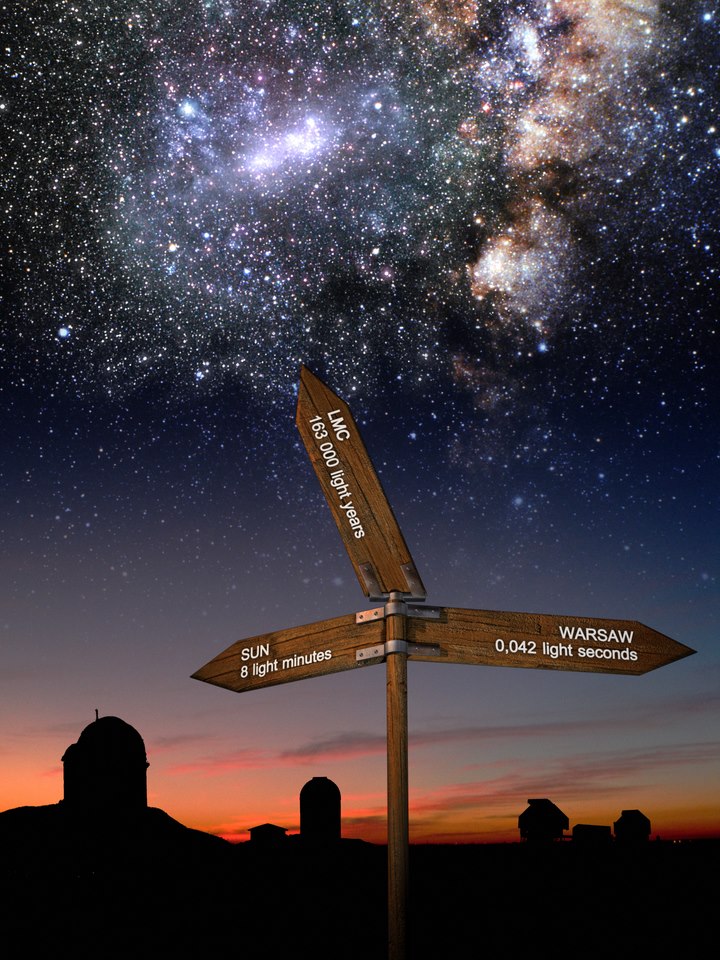 |
Catalogs
Cepheid Phys. Properties
Binary Cepheid Solutions
Projects
SB2 Cepheids
Classical Cepheids
Type II Cepheids
Papers
by category
by first author
by target
Visitors so far: 85092.

Relevant publication:
2013, Nature, 495, 76 (← click to see the publication at ADS/arXiv)
Observations of long-period, late-type eclipsing binaries composed of cool, giant stars offer a unique opportunity to measure stellar parameters and distances precisely and accurately. Measurements of both the linear and the angular sizes of these binary components can be conducted very precisely while avoiding the most important problems related to the hot, early-type systems. The LMC distance derived from eight long-period, late-type eclipsing binaries (49.97 ± 0.19 (stat.) ± 1.11 (syst.) kiloparsecs) is accurate to 2.2% (see the figure). This provides a firm base for refining both the period-luminosity relation for Cepheids in the LMC and the Hubble constant.